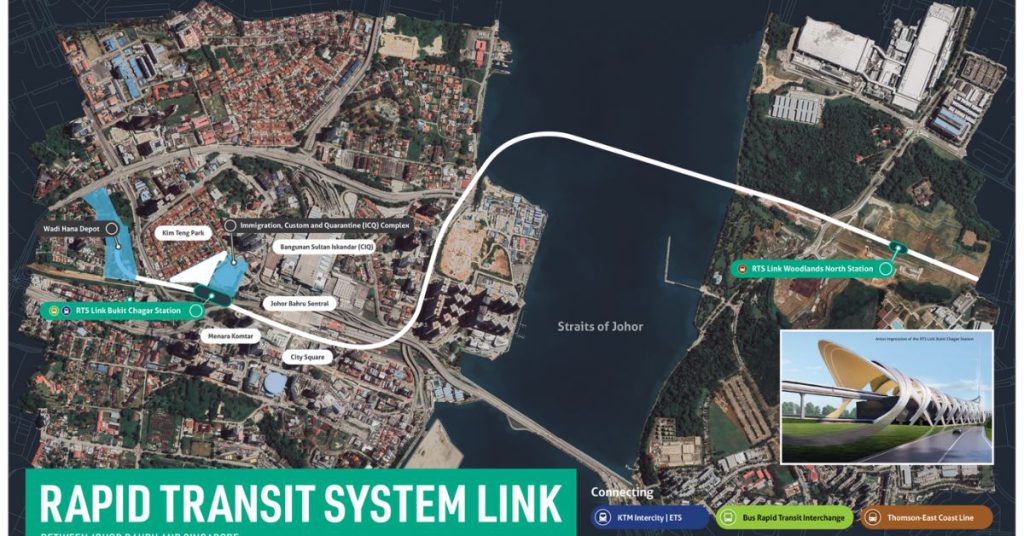Singapore’s private healthcare sector is undeniably advanced, but it’s not without its challenges.
A recent analysis by CGS International has revealed a sobering reality: private healthcare providers in Singapore face limited growth opportunities due to market maturity and stiff competition from public institutions.
Among the reasons? Singaporeans themselves are exploring more cost-effective healthcare options—including across the border in Johor Bahru (JB).
The allure of JB’s affordable healthcare
Healthcare in Singapore is world class, but it’s also expensive. With rising costs, many locals have found it more appealing to take a short trip to JB for medical care. It’s not just the savings on consultations and treatments; even non-urgent procedures like health screenings and dental work often cost a fraction of what they do in Singapore.
For Singaporeans, the Johor Bahru–Singapore Rapid Transit System (RTS) Link, set to be completed by December 2026, could make this even easier. With a mere five-minute train ride, seeking medical care in Malaysia could become as routine as grabbing coffee.

Imagine popping over to JB for a health check in the morning and being back in Singapore by lunchtime. Convenience and affordability? A no-brainer.
Public vs. private: Why local clinics are losing out
But it’s not just JB drawing patients away. Within Singapore, public healthcare institutions are giving private providers a run for their money.
For non-urgent issues, many Singaporeans are willing to tolerate longer wait times in exchange for lower costs at public hospitals. This trend squeezes the private sector, which has fewer options to compete on price.
Moreover, the high costs of private healthcare have discouraged foreign patients—once a lucrative market segment—from seeking treatments in Singapore.
Neighbouring countries like Malaysia and Thailand now offer medical tourism packages that combine affordability with high-quality care, further eroding Singapore’s appeal.
A vending machine doctor
While traditional models may be facing challenges, it looks like innovation might be driving the industry forward.
There’s this new thing in Singapore: a vending machine that can give you medical consultations and even issue MCs. It’s called Dr Kart, and it’s a vending machine offering 24/7 telemedicine consultations.
According to Mothership, this ingenious solution found at Shell stations like the one on Tampines Avenue 2 aims to provide convenient, on-the-go medical services. Here’s how it works:
- Register with your NRIC or SingPass.
- Consult a doctor remotely via a video call.
- Collect your prescribed medication directly from the machine.
If necessary, an official medical certificate (MC) is emailed to you. It’s quick, efficient, and accessible—ideal for busy individuals or those with sudden medical needs.
While Dr Kart is still in its proof-of-concept phase, the idea has already captured public interest. A TikTok video showcasing the service garnered nearly 300,000 views in less than a week.
It’s a glimpse into how Singapore’s health sector is leveraging technology to adapt to changing patient needs. However, while innovations like this are promising, they’re unlikely to address the broader systemic issues plaguing the private healthcare industry.
Singapore’s competitive edge in specialised care
Despite these hurdles, Singapore still excels in specialised medical services. Complex procedures like proton beam therapy (PBT) and other sub-specialty treatments continue to attract affluent patients from the region.
For those seeking premium healthcare, Singapore remains a top destination. However, relying on high-end treatments isn’t a sustainable growth strategy for the broader private healthcare sector.
With increasing pressure on costs and patient outflow to neighbouring countries, the industry must find ways to remain competitive while serving a diverse patient base.
Dr Kart is a great example of thinking outside the box, but it’s just the tip of the iceberg. To truly thrive, private providers must explore new ways to make healthcare more accessible and affordable without compromising quality.
The Johor Bahru–Singapore RTS Link will undoubtedly shift the dynamics further. It’s hard to ignore the implications of having such easy access to JB’s cost-effective healthcare services. While this spells trouble for Singapore’s health sector, it could also serve as a wake-up call to reassess pricing structures and patient care models.
Singapore’s healthcare sector is at a crossroads. Balancing innovation, affordability, and quality will be critical in the coming years. Will it rise to the challenge? Only time will tell, but one thing’s for sure: the competition across the Causeway is only going to get tougher.
Featured Image Credit: Hospital Management Asia